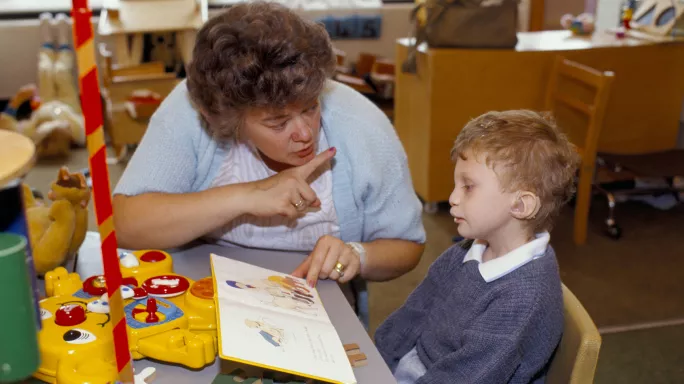- Home
- Hearing loss: what teachers need to know
Hearing loss: what teachers need to know

Hearing impairment is often described as a hidden disability because it isn’t always immediately obvious when someone has it (especially if they have found strategies to help to negotiate daily tasks).
As a teacher, you are likely to work with a number of young people with hearing difficulties over the course of your career, so it’s important to understand the signs, symptoms and implications.
Quick read: Give pupils with hearing loss more support with reading, urge experts
Quick listen: How much of your lesson should be teacher talk?
Want to know more? How to support children living a life less ordinary
Typical indicators of undiagnosed hearing difficulties include asking for information to be repeated, finding it hard to follow group conversations and a pupil not responding to their own name.
If you suspect that a student has a hearing difficulty, they will need to be referred to an audiologist (through their GP or the school nurse).
What difficulties may young people with hearing loss face?
Research has found a link between glue ear and dyslexia or general literacy difficulties; this is because any child with hearing loss - whether permanent or temporary, as in the case of glue ear - will struggle with early speech development if unsupported.
There is significant evidence that spoken language development is an indicator of how successful a young person will be at school. And whatever your feelings about phonics, there’s no doubt that it plays an important role in a child’s ability to read.
If a child cannot hear words accurately, and does not get the right support, they are going to struggle with aspects of literacy.
Young people with hearing loss may also have difficulty in social interactions, as they can appear to be daydreaming or on the edge of social groups rather than participating fully.
They may find it hard to join in when talking in large groups, particularly in areas with lots of background noise. As a result, they may miss out on incidental learning opportunities, whether in a formal setting such as the classroom or a less formal environment like the playground.
What can schools do?
Every child who experiences hearing loss should have an individual education plan (IEP) or equivalent, so that all professionals working with that young person understand how best to support them.
Staff training should be provided, ideally by a specialist teacher of the deaf.
Depending on the nature and severity of the hearing loss, a specialist teacher may be assigned to come into school to provide one-to-one support, working on, for example, vocabulary development (this is particularly important at secondary school, where there is a wide range of subject-specific vocabulary).
What should teachers bear in mind?
-
Position the young person at the front of the classroom. If the hearing loss affects just one ear, ensure that their other ear is the one towards the middle of the classroom, so their chances of hearing are maximised.
-
Ensure that the young person can see your face clearly when you are speaking. Avoid standing with a window or illuminated smart board behind you.
-
Speak normally; do not alter your speed or exaggerate your lip movements as this may make lip reading more challenging.
Sit the young person with a supportive peer (speak to them about this before drawing up the seating plan).

If a young person has hearing aids:
-
Ensure they are wearing them (it sounds obvious, but you’d be surprised) and that they are switched on, with a working battery.
-
Make sure the hearing aids are in properly and are not “whistling”.
If a young person has cochlear implants:
-
Liaise with their specialist teacher and hospital consultant to ensure that you have all of the necessary information and equipment.
-
Consider the use of a Soundfield system. This can be useful for all students and teachers, as the teacher’s voice is projected more clearly around the room.
-
When using a radio aid (which amplifies your voice over background noise), remove anything from around your neck that may distort the sound, such as a lanyard.
-
Ensure that the radio aid is switched on when you are addressing that particular student and switched off if you are helping other students. Be mindful that if you step outside of the room to have a private or sensitive conversation the young person will hear your conversation unless you mute the radio aid (one teacher I know forgot to mute when she went to the bathroom!). At our school we have a young person who has a cochlear implant, and she gives us a wave if we have forgotten to switch it on or mute it, but other students may not feel comfortable in doing this, so be mindful.
The National Deaf Children’s Society has excellent resources available to download for professionals and parents.
Gemma Corby is Sendco at Hobart High School, Norfolk. You can read all her articles on her Tes author page
Keep reading for just £1 per month
You've reached your limit of free articles this month. Subscribe for £1 per month for three months and get:
- Unlimited access to all Tes magazine content
- Exclusive subscriber-only stories
- Award-winning email newsletters



